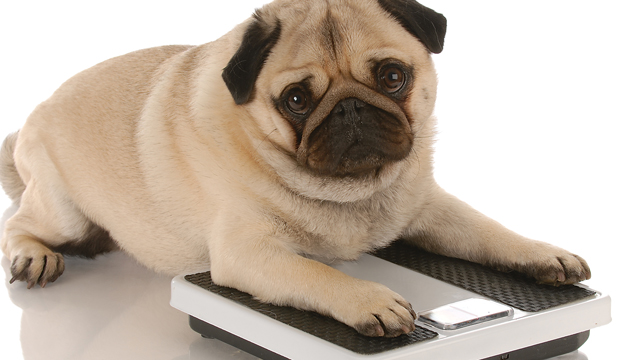During the holiday season, many of us found ourselves loosening our belts and avoiding thoughts of the scale as we enjoyed delicious meals with family and friends. As the new year begins, we often resolve to adopt healthier habits. While we head to the gym and make these positive lifestyle changes for ourselves, should we also consider the well-being of our 4-legged family members?
According to a 2018 clinical survey performed by the Association for Pet Obesity Prevention, 25.7 percent of cats and 36.9 percent of dogs were classified as overweight. This equates to an estimated 56 million cats and 50 million dogs who could benefit from the same health-positive resolutions we make for ourselves. So how do we combat obesity in our companion animals?
Speaking with your veterinarian is the first step in addressing any health concern for your dog or cat, and weight loss is no different. Below are some basic tips that your pet’s medical team may recommend during your office visit. Each pet is unique, so remember to contact your veterinarian for a treatment plan tailored to your furry friend.
1. Exercise! Get those paws moving.
This seems obvious, right? Though we know that staying active is a key component in healthy human weight loss, there is often a disconnect when it comes to the relationship between obesity and sedentary lifestyles in companion animals.
Most dogs need thirty to sixty minutes of exercise each day, though this may vary due to age and other factors. If you are not in a location where walking your dog for this length of time is feasible, don’t fret. There are plenty of other ways to keep your canine friend active. Going hiking, swimming, playing catch, and integrating training techniques that involve exercise in exchange for rewards are all beneficial activities. (As with any activity, check with your veterinarian first to ensure you are taking appropriate precautions and exercising safely.)
Most experts recommend roughly the same amount of daily exercise for indoor cats. Cat wands and toys, cat trees and climbing towers, and certain cat-safe laser pointers can all be used to encourage active playtime. As an added bonus, these activities are just as entertaining for pet parents as they are for cats.
2. Trim back the treats for dogs.
Again, this may seem obvious, but we love seeing those happy puppy eyes, and it’s easy to lose track of how many treats we are dishing out in the process. In addition to cutting back the overall number of treats given, it’s also beneficial to replace snacks with healthier options. Your veterinarian can guide you on your pet’s specific nutritional requirements and restrictions, but there are some tried-and-true treat replacements for canine companions.
Dogs typically enjoy carrots and apples in moderation, and these are generally healthy options. Low-sodium green beans can also help to bulk up a meal and fill a tummy while simultaneously decreasing calorie consumption. Many dogs even enjoy frozen pieces of their normal, dry kibble as a snack – cost-effective and healthy!
3. Make cats work for those calories.
Though cats tend to be a bit more limited (and a lot pickier) in terms of the treats we offer, there are still plenty of options for healthy feline snacking. Many indoor cats enjoy hunting for their food; place treats or meals strategically so that pets are required to stay active in order to enjoy them. Additionally, consider purchasing a feeding ball if your cat is a fan of dry food. These contraptions force pets to move the ball in order to release individual pieces of kibble, which increases activity levels.
4. Schedule an office visit.
It is worth repeating: The most important thing you can do to keep your pet healthy is to seek care from a professional veterinarian. Like their humans, each pet has different needs and restrictions in terms of the foods they should eat and the activities they should participate in.
Not only can your veterinary team provide you with the resources to set your pet on a path to better health, but they will be able to ensure that your pet is losing weight safely and Petin a way that is sustainable.




